In a defiant speech in late September, North Korea Foreign Minister Ri Young warned the U.N. General Assembly that the Korean Peninsula “has now been turned into the world’s most dangerous hot spot which can even ignite the outbreak of a nuclear war.” This was not speculation, but rather a warning from the former Chief of the General Staff of the North Korean Army.
Ri also claimed that the B-1B bombers U.S. pilots flew over South Korea had crossed the line separating the two nations.
A Pacific Command spokesman said U.S. aircraft “did not at any time cross the military demarcation line between North and South Korea.” Yet the maneuver was risky, given past policy statements by the United States, that it would, under certain unspecified conditions, consider the pre-emptive use of nuclear weapons against North Korea. And there was the fact that the B-1B bombers were part of a joint exercise with the South Korean military—only days after the government in Seoul announced that it had plans to assassinate the North Korean leadership, which involved precision missile and aircraft strikes.
The nuclear threat was all the more apparent in the aftermath of the magnitude 5.0 seismic event that rocked the Korean peninsula in early September. Based on an analysis of the seismic event, the size of the nuclear explosion to which North Korea admitted was between 10 and 20 kilotons, in the range of the 15- and 20-kiloton atomic bombs the United States dropped on Japan in 1945.
The most recent nuclear test comes on the heels of a series of ballistic missile launches that demonstrated Pyongyang’s ability to fire missiles at distances that threaten the Korean peninsula, Japan, and American bases on Guam. Admiral William E. Gortney, until this past May the commander of the North American Aerospace Defense Command, told a Senate Armed Forces Committee hearing in April that “North Korea’s ability to successfully shoot an ICBM with a nuclear weapon and reach the homeland is low.” Yet a year earlier, Admiral Samuel J. Locklear III, former head of the Pacific Command, warned the same committee that “all the indications are that we have to be prepared to defend the homeland” against North Korean missiles.
This is the situation, as it evolves between now and January, that Hillary Clinton or Donald Trump will inherit upon taking the oath of office.
How would they be inclined to respond?
“It’s clear that the increasing threat posed by North Korea requires not only a rethinking of the strategy, but an urgent effort to convince the neighbors, most particularly China, that this is not just a U.S. issue,” Clinton said. “And it will be on the top of my list in dealing with China in how we are going to prevent what could very well be a serious conflict with North Korea.”
A week before the nuclear test, Trump had already defined a nuclear Korea as China’s problem. “China, this is your baby,” Trump said. “This is your problem. You solve the problem.”
The focus on China is misdirected. The story behind North Korea’s pursuit of nuclear weapons suggests why this is so.
The blame for the current state of affairs falls squarely on the shoulders of the United States.
At the conclusion of the Korean conflict in 1953, the United States, together with the United Nations-led coalition that confronted the North Korean-Chinese aggression, signed an armistice agreement with North Korea. But it was an armistice, suspending hostilities, so for more than 60 years, technically, North and South have been in a state of war.
One of the strengths of the agreement was the Neutral Nations Supervisory Commission (NNSC), created to conduct critically important inspections on both sides of the demarcation line, to ensure that no reinforcements or new military equipment was introduced into the Korean peninsula by any of the involved parties.
But the South Korean government viewed the NNSC teams as an impediment to national security, because they limited Seoul’s ability to reorganize and modernize its armed forces. The United States had its own reservations about the NNSC. President Dwight Eisenhower, under pressure to cut military spending, wanted to reduce the number of troops stationed in South Korea and replace them with nuclear weapons, which would serve as a regional deterrent to North Korea, China, and the Soviet Union. The United States began to question the effectiveness of the NNSC, and made claims about North Korean reinforcement (without citing any facts or evidence), which served as a pretext to terminate the inspection-and-investigation mission of the NNSC in June 1956.
In June 1957, based on claims of North Korean reinforcement that could no longer be investigated by the sidelined NNSC, the United States announced it was no longer bound by paragraph 13(d) of the armistice, concerning the introduction of new weapons types. In January 1958, the United States began deploying nuclear weapons, including missiles that could reach Chinese and Soviet territory, onto South Korean soil. The stated policy of the United States at the time, according to reports issued by the National Security Council, was to actively encourage measures designed to delegitimize and destabilize the North Korean government. North Korea’s government could only interpret U.S. nuclear weapons on the peninsula as a threat.
When North Korea turned to the Soviet Union and China to acquire its own nuclear capability, both countries refused, although the Soviet Union did provide technical assistance for peaceful nuclear technology, including a nuclear reactor. Then in 1969, President Richard Nixon, also responding to fiscal pressure, sought to withdraw all American forces from South Korea. To pressure the Americans to stay, South Korea threatened to build its own nuclear weapons, in 1974 signing a nuclear technology cooperation agreement with France. The United States and South Korea ultimately reached a compromise in 1975: U.S. forces would remain and South Korea would abandon its nuclear weapons ambitions. Yet the North Koreans were disturbed by the ease with which its arch foe in Seoul had almost made it into the nuclear club.
Faced with the reality of American nuclear weapons across the border and the possibility of a South Korean weapons program, North Korea aggressively pursued its own nuclear weapons program. The withdrawal of American nuclear weapons from South Korea in 1991, and the signing of an agreement between Pyongyang and Seoul for a nuclear weapons-free peninsula, did little to discourage the North Koreans.
In 1994, North Korea’s pursuit of nuclear weapons led to a confrontation with the United States and the near resumption of hostilities between North and South, as President Bill Clinton, facing his first foreign policy crisis, pursued a strategy focused on strict international economic sanctions in an attempt to discourage North Korea’s drive for weapons. When Clinton failed, Pyongyang opened the door for a mission by former President Carter. There, Carter repudiated sanctions and laid the foundation for direct negotiations between the United States and North Korea, which resulted in what was known as the Agreed Framework: North Korea would abandon its nuclear weapons program in exchange for economic assistance and provision of nuclear technology that could not be used in a nuclear weapons program.
North Korea complied, freezing construction and operation of identified nuclear facilities and cooperating with the United States to resolve concerns of undisclosed nuclear capability. In 1999 North Korea even agreed to a moratorium on testing ballistic missiles, which was formalized in 2002. The United States, however, failed to live up to its end of the bargain. While Congress funded the provision of fuel oil to North Korea required under the agreed framework, it withheld funding for the construction of light-water nuclear reactors. In early 2002, President George W. Bush declared North Korea part of a global “axis of evil” (together with Iraq and Iran) and announced that the United States was implementing a policy of nuclear preemption against North Korea, threatening Pyongyang with nuclear attack. That was a clear violation of the Agreed Framework.
North Korea-U.S. relations again sank in October 2002, when the United States accused Pyongyang of having a covert uranium enrichment program. North Korea declared it had a right to defend itself in the face of American provocations. In response, the United States halted deliveries of fuel oil required under the Agreed Framework. North Korea retaliated by withdrawing from the Nonproliferation Treaty, then in 2006 renounced its moratorium on missile testing (followed by a series of missile tests) and began conducting an underground nuclear test later that year. The United States responded by reinforcing economic sanctions.
Since that time, the North Koreans and the United States have been engaged in tit-for-tat exchanges where the North Koreans conduct missile launches and nuclear tests and the United States, through U.N. Security Council resolutions and unilaterally, hits back with economic sanctions, with no end in sight to this cycle of escalation. What this primer on U.S.-North Korea relations shows, however, is that despite the rhetoric of American politicians today, the blame for the current state of affairs does not rest with China but with the United States. The American deceit that began with forcing NNSC inspectors off the peninsula in 1956, then using that to justify the introduction of nuclear weapons, continues to this day.
This history in no way diminishes the threat posed by North Korea’s nuclear weapons and ballistic missiles. North Korea might have a legitimate claim that it needs these weapons to deter an aggressive United States that has over six decades threatened Pyongyang with preemptive nuclear attack. Yet nuclear weapons in the hands of Kim Jong-un and his generals are a destabilizing reality that the United States is now scrambling to respond to. These missiles, armed with nuclear warheads, are expected to be deployed and operational next year—a deployment that would preclude military action by the United States, out of fear of a nuclear response.
Economic sanctions haven’t yet stopped North Korea’s nuclear program, and there is no chance they will now compel North Korea to give it up. Efforts to get China to exert more pressure on North Korea are doomed because of planned deployment of American anti-missile defenses in South Korea, a move China vehemently opposes.
Secretary Clinton’s “rethinking of the strategy” is a rhetorical device that suggests another approach. Nothing the United States has done since Eisenhower deployed nuclear weapons in South Korea has in any way helped avert what is now a grim reality.
Former Marine intelligence officer Scott Ritter served on the staff of General Norman Schwarzkopf during the Gulf War and as a U.N. weapons inspector in Iraq from 1991–1998. He is the author of several books.

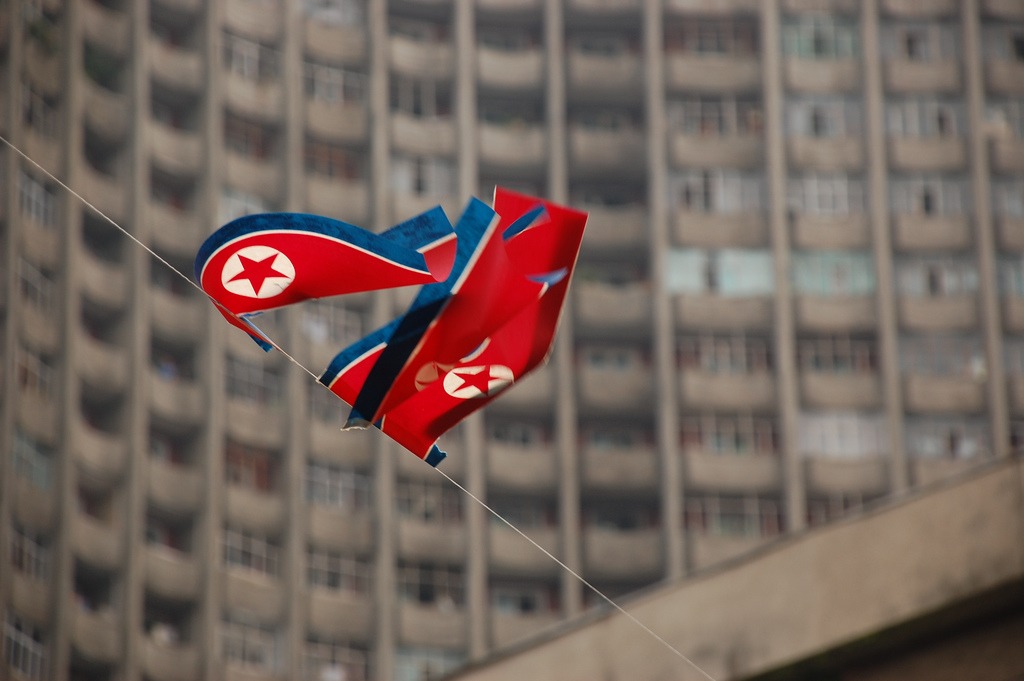
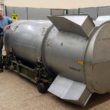
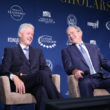
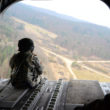
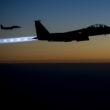

0 Comments